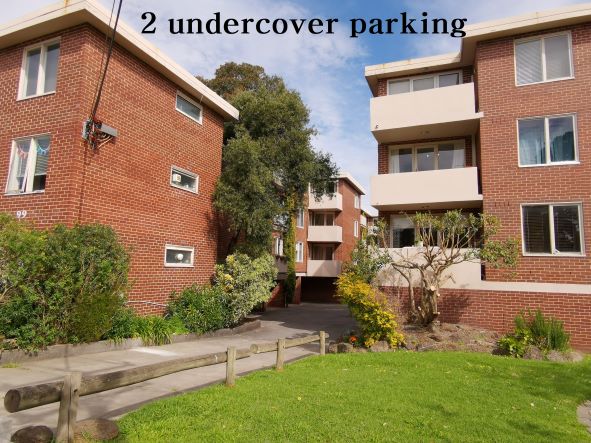RENT
8/99 Alma Road, St Kilda East, Vic 3183
8/99 Alma Road, St Kilda East, Vic 3183-
- $360 per week
- 2 Bedrooms
- 1 Bathroom
- 2 Garages
10-12 Cranston Close, Narre Warren North, Vic 380
10-12 Cranston Close, Narre Warren North, Vic 3804-
- $1100 per week
- 5 Bedrooms
- 3 Bathrooms
- 6 Garages
UNDERSTANDING THE RENTAL PROCESS
With steadily rising property prices, renting is becoming increasingly popular due to greater flexibility and the lesser financial commitment.
Having helped thousands of people right across the East Coast of Australia, we want to share our insights.

WHAT ARE THE STEPS TO RENTING?










UNDERSTANDING THE PROCESS OF BUYING A HOUSE OR UNIT
Once you have made the decision to buy a new home, knowing how to research the market and what to look for in a neighbourhood are key.

THE KEY BENEFITS OF RENTING

Renting offers a number of key benefits:
- Easier to make changes if you are not locked into a home loan
- Better financial stability – you clearly know your monthly expenses and can plan for them
- No maintenance or repair costs – the owner of the property is typically responsible
- Affordability – renting enables people to enjoy a lifestyle in an area they may not be able to afford to buy in
- Flexibility to move – if you don’t like the neighbourhood or if you want a different lifestyle, you can easily move once your lease expires
- Ability to diversify your investments rather than putting all your savings into paying your home loan
- No market risk – as you don’t own the property, the impact of property market fluctuations will not impact your long-term finances
- Access to amenities – many apartment/unit rental properties offer additional amenities like pools and gyms
- Save for a home deposit
THE KEY BENEFITS OF RENTING
With increasing property prices across much of Australia, getting a foot on the property ladder is challenging for first home buyers. However, the Australian dream of owning a home has not completely disappeared, although it is taking a different form.
Instead of buying a property to live in, many first home buyers are now renting a property in an area they want to live in, and buying an investment property in an area they can afford. This is called rentvesting. Whilst any investment decision should be made in conjunction with your financial advisor, rentvesting can offer some benefits:
- Get into the property market - ability to buy now rather than waiting to save
- Build wealth - continue the renting lifestyle while building a property portfolio and your wealth
- Tax benefits - tax concessions can be available for investors
- Less emotion in the purchase - the investment location is based on capital gain potential or rental yield, not whether you want live there
- Ability to move - as a renter, you still have flexibility to move at the end of your lease


FINDING AND APPLYING FOR A RENTAL PROPERTY
The process of finding, inspecting and applying for a rental property is similar whether you are renting an apartment or a house.
Knowing how to research the rental market, what to look for when you are inspecting and how to write a winning rental application are key to successfully renting a property. Let us guide you through the process.
HOW TO FIND A RENTAL PROPERTY
TALK TO YOUR LOCAL MCGRATH PROPERTY MANAGER
Your local McGrath Property Manager is a great source of information. Not only can they help find you a property from their portfolio, they have a wealth of knowledge about the area that is invaluable when renting. They can share insights into average rental rates, demand for the area and the lifestyle benefits of living there.
Contact your local McGrath Property Manager.


SEARCH FOR RENTAL PROPERTIES ONLINE
The easiest way to find a rental property is to search online and our site is a great place to start. With over 30,000 properties under management, you can easily narrow down your search and find a home to suit your budget and lifestyle.
Real estate portals are a great place to search the wider market and to understand rental prices across different suburbs. Signing up for rental alerts is also a good idea.
INSPECTING A RENTAL PROPERTY - WHAT TO LOOK FOR
Rental inspections can be busy. This combined this with the fact that you only have a limited time to inspect the property, and to decide if it is suitable, can make inspections challenging.
Viewing a property in person ensures there are no surprises. Outside of the basics, such as, does it have the right number of bedrooms and enough space, below is a simple checklist of other things to look out for:
- How secure is the property and does it have smoke detectors?
- Overall cleanliness and presentation of the property
- Does the space fit your furniture? – It never hurts to measure
- Does it have enough storage or space to bring your own?
- Is there heating or cooling? Is it energy efficient?
- Does it have room for your white goods?
- Do the windows open and close easily?
- Is the cook top gas, electric or induction?

HOW TO APPLY FOR A RENTAL PROPERTY

If you have found your rental property, you will need to submit a rental application. Keep in mind the property may be in high demand and getting accepted can be extremely competitive.
Key here is ensuring you have included all the necessary information with your application:
- Proof of identity – this is critical. A passport or a copy of your driver’s licence is ideal here
- Rental history – if you have rented in the past, provide your rental ledger
- If you haven’t rented before – personal references from employers, head of student accommodation or other reliable sources will be suitable
- Financial status – determining whether you will be able to pay the rent is key to having your application accepted. Consider adding payslips and bank statements to show your ability to pay rent and strengthen your application
- References from past landlords, property managers and employers are ideal
- Rental resume – consider creating a rental resume you can share each time
- Include a cover letter – this helps your application stand out by showing why you believe you are the best candidate
- Talk to the property manager – putting a face to the application is always good
WHAT HAPPENS AFTER YOUR RENTAL APPLICATION IS APPROVED
If your application is accepted, you will normally receive an email from the Property Manager or landlord saying that your application was successful.
They will also include a copy of the Residential Tenancy Agreement or, as it is also called, a lease agreement, for you to review and sign. This is a legally binding document that outlines your rights and responsibilities, so it is important you read it very carefully before signing it. More on this next.
Typically, you will be required to pay the bond before moving in. This is kept as security in case the tenant breaches any of the terms of the contract against such things as excessive damage or unpaid rent.
Before you move in you will also be provided with a copy of the condition report for you to sign and keep on file. This is a record of the general state of repair of the property on a room by room basis and includes fixtures and fittings. We talk more about this later.

WHAT IS A RESIDENTIAL TENANCY AGREEMENT?

A Residential Tenancy Agreement, or lease as it is called, is a legally binding agreement between a tenant and a landlord that sets out the terms and conditions for the arrangement.
Do not sign the lease until you have read and understood the terms and what is expected of you as a tenant.
What should be included in a lease agreement?
- The name and address of the tenant
- The name of the property manager / landlord
- The start and end date of the lease
- The rent and when and how it should be paid
- The amount of bond required
- The length of the tenancy
- Standard terms – what the tenant and the property manager / owner can and cannot do
- Special terms – these must be agreed in advance and may include: dog must be kept outside, no smoking, garden will be maintained once a month by the landlord
WHAT IS A RENTAL BOND?
A rental bond is a one-off security deposit paid by the tenant at the start of the tenancy. It is there to protect the landlord in case a tenant breaches the lease agreement. The bond amount is specified in the tenancy agreement. It is normally 4 weeks worth of rent, but it may be slightly more, depending on which State or Territory you are renting in.
How you pay your rental bond will be dependent upon which State or Territory you are residing in. Bond money will be held in an approved ‘Bond Trust’ managed by each state government or approved financial institution. The money will remain in the Bond Trust until the end of the tenancy.
Five to ten days after the bond is lodged with the relevant authority, you will be sent a receipt with a rental bond number. If you don’t receive this, make sure you contact your landlord as this is proof you have paid your bond, proof you will need when your lease is finished, and you seek to get your bond back.
At the end of the lease, the property manager will inspect the property and, based on the final inspection, will request all or part of the bond be refunded back to the tenant. Each State and Territory has different bond rules, so make sure you investigate your relevant local laws.

WHAT IS A CONDITION REPORT?

A condition report is an official record of the general condition of a rental property. Before a tenant moves in, a Property Manager will inspect each room of the property and document its overall condition. They will record any damage, no matter how minor and describe it on the report. In many cases, they will also photograph or video the property to back up the written report.
Once the report is completed, two copies will be given to the tenant to review, action and sign. It is important that you, as the tenant, review the report carefully and, if you do not agree with sections of the report, note any amendments. One signed copy then must then be returned to the landlord or Property Manager within the time frame they have requested.
Make sure you keep a copy of the report for the duration of the tenancy, as it will be used to assess the condition of the property before the tenant moves out and, importantly, before the Property Manager approves the refund of the bond.
WHY RENT WITH US?
With over 30,000 properties under management, we have a property for every budget and every lifestyle.
Plus, our team of 400+ passionate and highly trained Property Managers are focused on making your rental journey as easy as possible.
Realise more with McGrath.

What's next?
01
FIND YOUR RENTAL PROPERTY
With over 30,000 properties under management we have a home for every budget and every lifestyle. Search our available rental properties.
02
TALK TO YOUR LOCAL MCGRATH PROPERTY MANAGER
Find out what is happening in the local rental market, what properties are available and the average rental rates.



